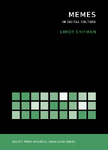Please use this identifier to cite or link to this item:
http://lib.hpu.edu.vn/handle/123456789/33409Full metadata record
| DC Field | Value | Language |
|---|---|---|
| dc.contributor.author | Shifman, Limor | en_US |
| dc.date.accessioned | 2020-08-03T08:48:35Z | - |
| dc.date.available | 2020-08-03T08:48:35Z | - |
| dc.date.issued | 2014 | en_US |
| dc.identifier.isbn | 978-0-262-52543-5 | en_US |
| dc.identifier.other | HPU2164201 | en_US |
| dc.identifier.uri | https://lib.hpu.edu.vn/handle/123456789/33409 | - |
| dc.description.abstract | In December 2012, the exuberant video "Gangnam Style" became the first YouTube clip to be viewed more than one billion times. Thousands of its viewers responded by creating and posting their own variations of the video--"Mitt Romney Style," "NASA Johnson Style," "Egyptian Style," and many others. "Gangnam Style" (and its attendant parodies, imitations, and derivations) is one of the most famous examples of an Internet meme: a piece of digital content that spreads quickly around the web in various iterations and becomes a shared cultural experience. In this book, Limor Shifman investigates Internet memes and what they tell us about digital culture. | en_US |
| dc.format.extent | 211p. | en_US |
| dc.format.mimetype | application/pdf | |
| dc.language.iso | en | en_US |
| dc.publisher | MIT Press | en_US |
| dc.subject | Internet | en_US |
| dc.subject | Memes | en_US |
| dc.subject | Digital Culture | en_US |
| dc.title | Memes in Digital Culture | en_US |
| dc.type | Book | en_US |
| dc.size | 1,64 MB | en_US |
| dc.department | Sociology | en_US |
| Appears in Collections: | Sociology | |
Files in This Item:
| File | Description | Size | Format | |
|---|---|---|---|---|
| Memes-in-Digital-Culture.pdf Restricted Access | 1.68 MB | Adobe PDF |  View/Open Request a copy |
Items in DSpace are protected by copyright, with all rights reserved, unless otherwise indicated.
